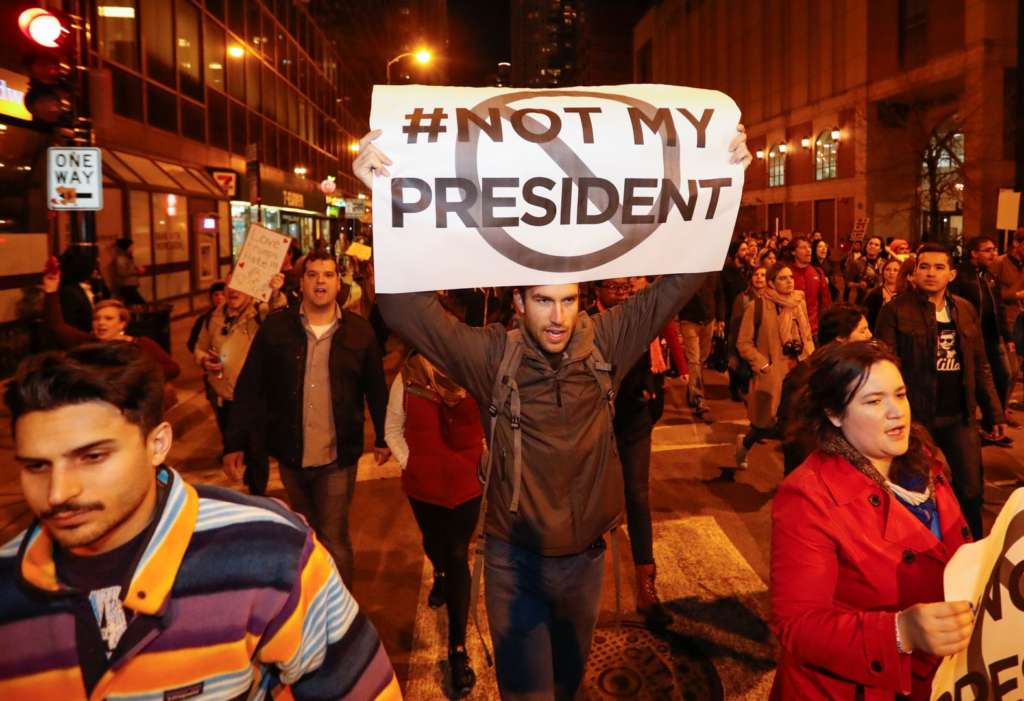New York- New York, Boston, Chicago, Los Angeles, San Francisco: the cities are many and so are the anti-Trump protests.
Since the U.S. president’s inauguration, daily life in multiple metropolitan centers has been carried out with the knowledge that at any moment — and on weekends in particular — demonstrations are unfurling in the streets below.
“This is the first time I have ever been on the ground helping out people,” Mark Hanna, a 29-year-old New York lawyer, who demonstrated and offered his services to travelers impacted by Trump’s immigration decree at New York’s John F Kennedy airport, told AFP.
The United States has not seen such a vast mobilization — women, doctors, Muslims, students, artists, gays — since 2003, when large rallies were held against the Iraq war, said Fabio Rojas, a sociology professor at Indiana University.
A wide range of issues unites Trump’s opponents, in addition to his inflammatory statements and controversial decrees.
“There is a good chance we are going to see more of it,” Rojas told AFP.
The urban, anti-Trump rallies are fed by the fact that major U.S. cities tend to skew Democrat, the party of Hillary Clinton, who lost the November presidential election in a surprise defeat.
Many liberals are still reeling after Clinton won the U.S. popular vote but lost the state-weighted electoral college, a rare occurrence in U.S. politics, although it happened as recently as 2000, when president George W. Bush bested Al Gore.
Social media has fired up the anti-Trump base by allowing groups to coalesce around different causes, whether women’s rights, immigration or gay rights.
Experts, however, warn that if the movement is not accompanied by concrete action, it could garner little measurable effect, as was the case with Occupy Wall Street.
“It’s very hard to predict where it will go,” said Dana R. Fisher, a sociologist at the University of Maryland.
“Citizens in the U.S. are responding in ways we don’t predict.”
Case in point: Protests spread like wildfire following Trump’s immigration and travel decree last month that saw lawyers flock en masse to airports to help those affected by the ban.
And an influx of donations was made to the American Civil Liberties Union as it fights the directive. The civil rights group raised $24 million the weekend after Trump signed his order — six times the group’s yearly average.
A call has also been placed on social networks for a general U.S. strike on February 17. If heeded, it would “expand the repertoire” of protests in a country where strikes are rare and generally ineffective, Fisher said.
The overall protest movement could be halted, Fisher added, if Trump “could act in a way that’s more presidential.”
But with Trump unlikely to change his behavior anytime soon, many protesters are determined to continue.
“Protests are a part of the puzzle, but they are not going to do everything,” said Lauren Irwin, 26, who has demonstrated 12 times since the inauguration.
Stephanie Murphy, a 33-year-old sweater designer, will keep marching too.
“When (Trump) sees these crowds on TV, it drives him crazy, or if I may say, it drives him crazier,” she said, laughing.
